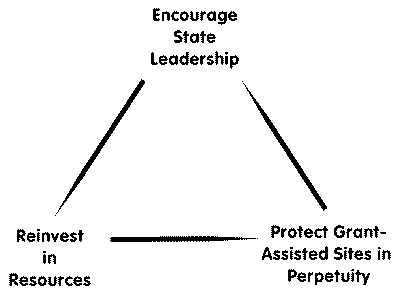
The Land and Water Conservation Fund has had a role in establishing or bolstering a number of key national conservation policies:
First among these is the principle of resource reinvestment. Most of the income deposited to the Fund comes from offshore oil leasing revenues, based on the idea of recycling the proceeds of natural resources development back into natural resources protection. While a nonrenewable resource is being used, renewable resources in the form of conservation and recreation lands are increased and enhanced.
The grants program has also emphasized a leadership role for states - a full partnership with national and local governments in planning, funding and providing nationwide recreation opportunities. As a result of this emphasis, states have:
- Made firm commitments to outdoor recreation planning
- Established and expanded their own scenic river trail and other systems
- Encouraged their cities and counties to improve planning and development of recreation resources
- Instigated hundreds of recreational bond issues to fund state and local parks.
A third principle, and one with major impact on long-term resource protection, is the concept of a permanent, national recreation estate. The LWCF Act requires that all property acquired or developed with LWCF assistance be maintained perpetually in public recreation use. This ensures that tens of thousands of outdoor sites - at every level of government and in almost every county of the United States - are recognized as continuing legacies that must remain available, not just for today's citizens but for all future generations of Americans.
Last updated: June 16, 2015
